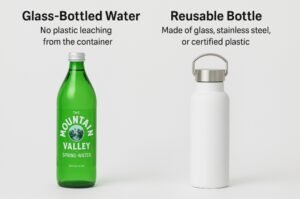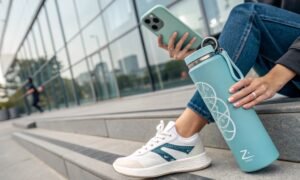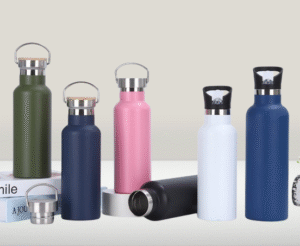You are developing a sports water bottle line. But the features that work for a gym-goer might fail for a hiker, risking negative reviews and a product that misses the mark.
The right bottle matches the activity. For the gym, prioritize one-handed use and a leak-proof design. For outdoor sports, focus on durability, a secure carry loop, and lightweight materials like stainless steel or Tritan plastic.
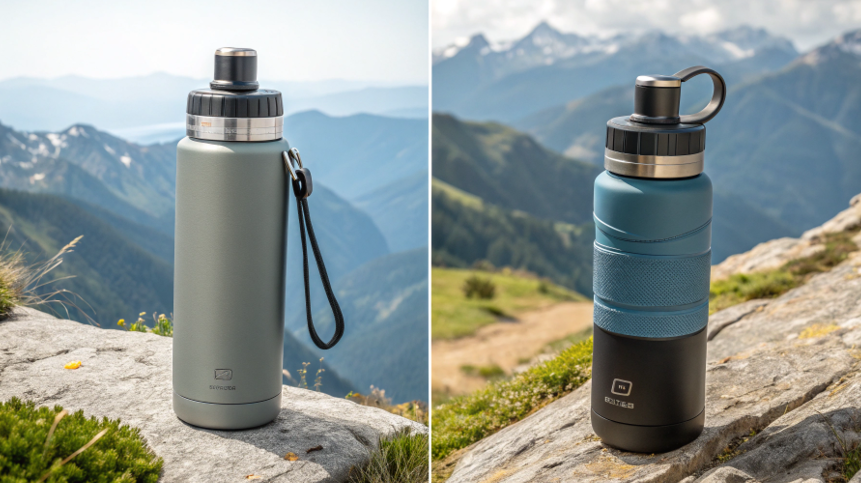
I've learned that a "one-size-fits-all" approach to sports bottles is a recipe for failure. A successful product line doesn't just offer one bottle; it offers a solution for every specific activity. A developer's real job is to get inside the user's mind. You need to think about their hands, their bags, and their movements. Once you understand their context, you can design the perfect bottle that feels like it was made just for them.
What type of water bottle is best for the gym?
Gym users are focused on their workout, not their bottle. A clumsy, leaky, or hard-to-open bottle is an annoying distraction that could earn your product a one-star review.
The best gym water bottle is a single-wall stainless steel or BPA-free Tritan plastic bottle. It should have a one-handed, push-button spout lid for quick sips and a secure lock to prevent spills inside a gym bag.
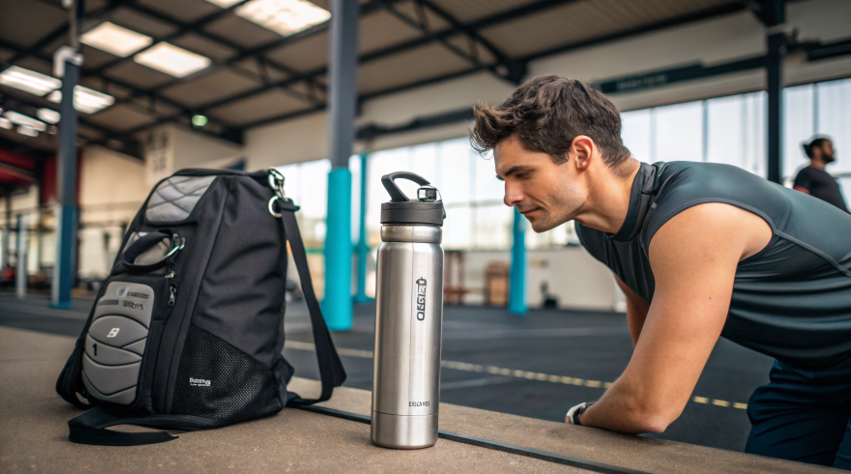
I once worked with a fitness brand, and we obsessively tested lid designs. We found the biggest pain point was fumbling with a screw-top lid mid-workout. A user wants to grab, drink, and drop the bottle in under five seconds. The push-button spout lid was the clear winner. This small detail in user experience made a massive difference in customer satisfaction. For a product developer like Emily, designing for convenience is just as important as choosing the right material. It's the little things that make a product great.
Designing for the Workout Environment
The gym is a unique environment. Your product must be designed to fit seamlessly into it.
- Lid Functionality is Key: The user's hands might be tired or sweaty. They need instant access to water between sets.
- Spout Lid: Allows for quick, controlled gulps of water.
- Straw Lid: Good for treadmills and bikes, enabling sips without tilting the bottle.
- One-Handed Operation: A push-button mechanism is essential.
- Leak-Proof Lock: A must-have feature to give users confidence when tossing it in their bag.
- Material Choice: Insulation is usually not needed for a 1-2 hour workout.
- Tritan Plastic: A fantastic choice. It's lightweight, extremely durable, shatterproof, and cost-effective.
- Single-Wall Stainless Steel: Also very light and durable, with a more premium feel.
- Shape and Size: The bottle must fit in standard cup holders on treadmills and weight machines. A 24-32 oz (750-1000ml) capacity is usually perfect.
Is it better to drink out of aluminum or stainless steel?
You see both aluminum and stainless steel bottles on the market. Making the wrong choice could mean you are selling a product that is less safe and less durable than your competitors'.
Stainless steel is significantly better than aluminum. Stainless steel is naturally inert and does not require a liner. Aluminum bottles must have a plastic or epoxy liner inside, which can get scratched, degrade, and potentially leach chemicals.
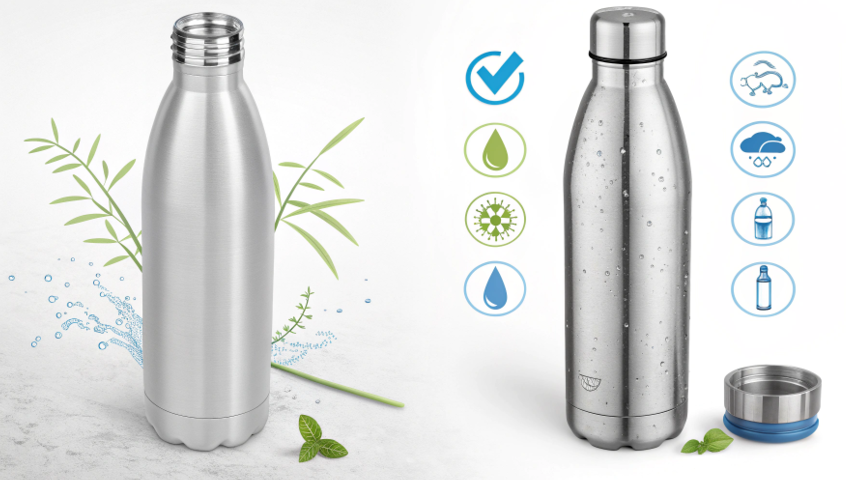
This is one of the most important technical distinctions I teach new developers. From the outside, the two materials can look almost identical. But on the inside, they are worlds apart. The need for a liner in aluminum bottles is a fundamental weakness. I always tell my clients to build their brand on the purity and simplicity of unlined 18/8 stainless steel. It is a stronger, safer, and more honest material that provides a clear advantage you can market to customers.
The Critical Difference for Health and Durability
For Emily, understanding the science behind the materials is crucial for making a responsible choice.
| Feature | 18/8 Stainless Steel | Aluminum |
|---|---|---|
| Purity | Inert. Naturally non-reactive. Does not leach chemicals or flavors. | Reactive. Must be separated from the liquid with a liner. |
| Liner Needed? | No. The steel itself is food-safe. What you see is what you get. | Yes, always. The liner is the weak point; it can be scratched or damaged. |
| Durability | Very High. Strong and resistant to dents. | Lower. Softer metal that dents and deforms more easily. |
| Taste | Pure. Does not retain or impart flavors. | Depends on liner. An intact liner is fine, but a damaged one can lead to metallic taste. |
| Verdict | Superior Choice. Safer, more durable, and provides a purer drinking experience. | Compromised Choice. Relies on a liner that can fail, posing a potential health risk. |
The choice is clear. For a premium, health-conscious product line, 18/8 stainless steel is the only professional option. The risks associated with the liners in aluminum bottles are not worth the minor cost savings.
How do you pick the right water bottle?
You want to design a "perfect" water bottle. But with so many options for materials, lids, and sizes, you're not sure where to start or how to match features to the right customer.
Pick the right bottle by first defining the primary use case. Then, match the material, lid type, and capacity to that specific activity. There is no single "best" bottle, only the best bottle for a particular need.

I always advise developers to create a simple "user matrix." We map out different customer types and their daily activities. A student needs something different than a construction worker. A yoga practitioner has different needs than a mountain biker. This simple exercise forces you to stop thinking about the bottle and start thinking about the person. When you design for a person and their life, you create a product that they will love and recommend to others. It’s a roadmap for creating a focused and successful product line.
A Developer's Decision-Making Checklist
Use this framework to build a bottle that perfectly serves its purpose.
- Define the Activity:
- High-Intensity (Gym, Running): Needs quick access.
- Long-Duration (Hiking, Camping): Needs durability and capacity.
- Casual (Office, Home): Can prioritize aesthetics and taste.
- Choose the Material:
- Stainless Steel: Best for durability and insulation.
- Tritan Plastic: Best for lightweight, shatterproof needs.
- Glass: Best for taste purity at home or office, but not for sports.
- Select the Lid:
- Spout/Straw Lid: Best for quick sips during activity.
- Screw-Top Lid: Best for a simple, 100% secure seal on a hike.
- Cafe Cap: Best for hot drinks on a commute.
- Determine the Capacity:
- 18-24 oz (500-750ml): Good for gym workouts or a daily commute.
- 32-40 oz (1L - 1.2L): Best for all-day hydration or long hikes.
What is the healthiest type of water bottle to drink from?
Health is a top priority for your customers. You worry about choosing a material that could have hidden health risks, potentially damaging both your customers' trust and your brand's reputation.
Glass and 18/8 food-grade stainless steel are the two healthiest materials. Glass is inherently pure, while stainless steel is an inert metal that is non-toxic and does not require a liner. Both are excellent, safe choices.
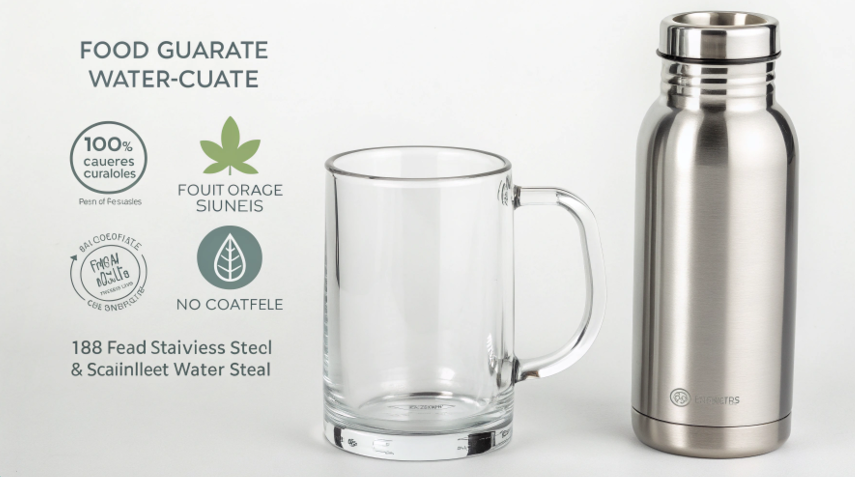
For any application involving activity and travel, stainless steel is the practical winner for health and safety. I’ve seen the rise of consumer concern over plastics firsthand. It has created a huge opportunity for brands that can offer a genuinely safe alternative. By choosing 18/8 stainless steel, you provide a clear and simple health promise to your customers: no plastic, no liners, no worries. This isn't just a feature; it's a powerful marketing message that builds immediate trust.
A Health-First Material Comparison
When health is the number one priority, the choice of material becomes very clear.
- Tier 1: The Champions of Health
- Glass: The purest material. It has zero chemical reactivity and will never affect the taste of your water. However, its fragility makes it a poor choice for the gym or outdoor sports.
- 18/8 Stainless Steel: The best all-around choice. It combines the non-leaching safety of glass with the durability needed for an active lifestyle. Its inert nature means it's safe with water, juice, or coffee.
- Tier 2: The Safe Alternative
- BPA-Free Tritan Plastic: High-quality modern plastics like Tritan are a great option. They are certified to be free of BPA and other known harmful chemicals. They offer a safe, lightweight, and shatterproof solution perfect for sports.
- Tier 3: The Material to Avoid
- Aluminum: As discussed, its reliance on a liner makes it a less healthy choice. The risk of that liner failing makes it an unacceptable risk for a health-focused brand.
As a product developer, choosing 18/8 stainless steel is the safest bet for building a brand that customers can trust completely.
Conclusion
For the gym and outdoors, choose a bottle that fits the user's needs. This means focusing on one-handed lids for the gym and prioritizing the durability and purity of stainless steel for any activity.

